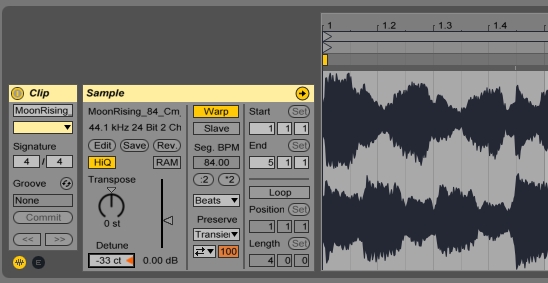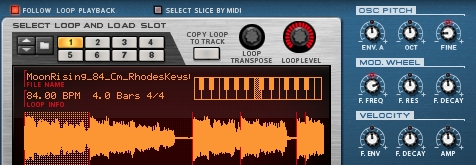
In my last tutorial, I showed you some top tips for injecting analog-style warmth into digital sounds. This time, I'd like to take a closer look at another excellent technique for adding that analog feeling into your digital productions: detuning.
What you need to do to detune a sound depends on how you're working with the audio that makes up your track. DAWs, samplers and synths all provide different methods for manipulating pitch, with the most challenging to modify being raw audio loops.
I'll be using a loop from our LA Beats collection for demonstrating points in the discussion below, so check it out if you like what you're hearing!
Here's the loop, a jazzy rhodes electric piano riff, in its original form:
Just a Phase: What is Detuning'
Detuning one audio signal just a little away from a copy of the signal playing at the original pitch results in something called 'beating', which is where a tone gets periodically louder and quieter at a rate determined by the amount of detuning. You can hear it at work on some sine waves here:
Beating occurs when the sound waves from the original audio and slightly detuned copy interfere - adding together to sound louder and then later counteracting each other, quietening the overall signal, before adding together once again when the waves line up. What should be clear from this description of the phase interference caused by detuning is that it only works when you have another sound that your detuned sound is detuned relative to - in other words, you need two sounds or oscillator voices!
The Better Half: Detuning Audio Clips
Audio clips can be harder to detune than, say, the output of a synth or sampler, where you can just lower the pitch of one of the oscillators or voices by a matter of 5-10 cents (i.e. less than a semitone). This is because lowering the pitch of already-rendered audio requires lengthening it, like setting a slower speed on a turntable.
So, if you were to make two copies of an audio clip and slow one of them a little, the notes would get out of sync pretty quick. We have a few options here though, depending on a few specifics such as the DAW you use and your audio format.
The simplest way to detune audio is with a pitch shifting plugin. My favourite is Aegean Music's free PitchProof, which has a handy 'Detune' knob built right in. Pitch shifting plugins are not a silver bullet, however - they tend not to deal very well with transients as they slice the audio up into chunks, shift the pitches and stitch the chunks back together.
This means that the chunk containing the transient of a sound is also shifted, which loses the snappiness of the onset and can sound quite synthetic. We're just about OK with some electric piano, though!
If the shifter was smearing out our transients, though, we'd need to snip the audio clip at the start of every new note and stretch each piece individually, whilst keeping the timing of the transients identical so that our loop would stay locked into the pulse.

Engage Warp Mode: Detuning in Ableton Live
If you're using Ableton Live however, you're in luck - the DAW has an excellent pitch shifting algorithm built right in - the Elastique algorithm. Ableton's implementation allows you to force it to warp everything apart from the transients, which it detects in the audio when you import, and marks with transient markers. If you duplicate the audio clip on another track and adjust the Detune control in the Clip View, you can get beautifully detuned audio with no fluffing of the transients!

Detune like a king: Detuning with REX
Like Live's transient-detection approach, detuning with REX files is also helped by the fact that they have transients marked out in the audio. Obviously, the slickest implementation of REX files in any DAW is in Propellerhead's Reason (as they designed the format). Dropping a REX file into a Dr. Octo Rex device, copying the device and adding some 'Fine' detuning to one of them gives you all of the richness of detuned audio with no need to chop up the audio yourself! Just as well all of our loop packs are available in the REX format, eh'
If you're not using Live, it is very possible your DAW has similar pitch-shifting capabilities - Logic Pro X's flex pitch can achieve a similar result, whereas in Reason you can always work with REX loops and adjust the pitch control of the second copy of your loop.
I hope this article has given you some pointers for thickening up audio loops to your liking. Remember with detuning, less can be more - I've gone quite heavy on these examples to demonstrate the technique but doing smaller amounts can lead to a wonderfully subtle richness in your sounds, as well as all the quirky phasing and chorusing-type sounds you get with short delays. Until next time, have fun creating!














